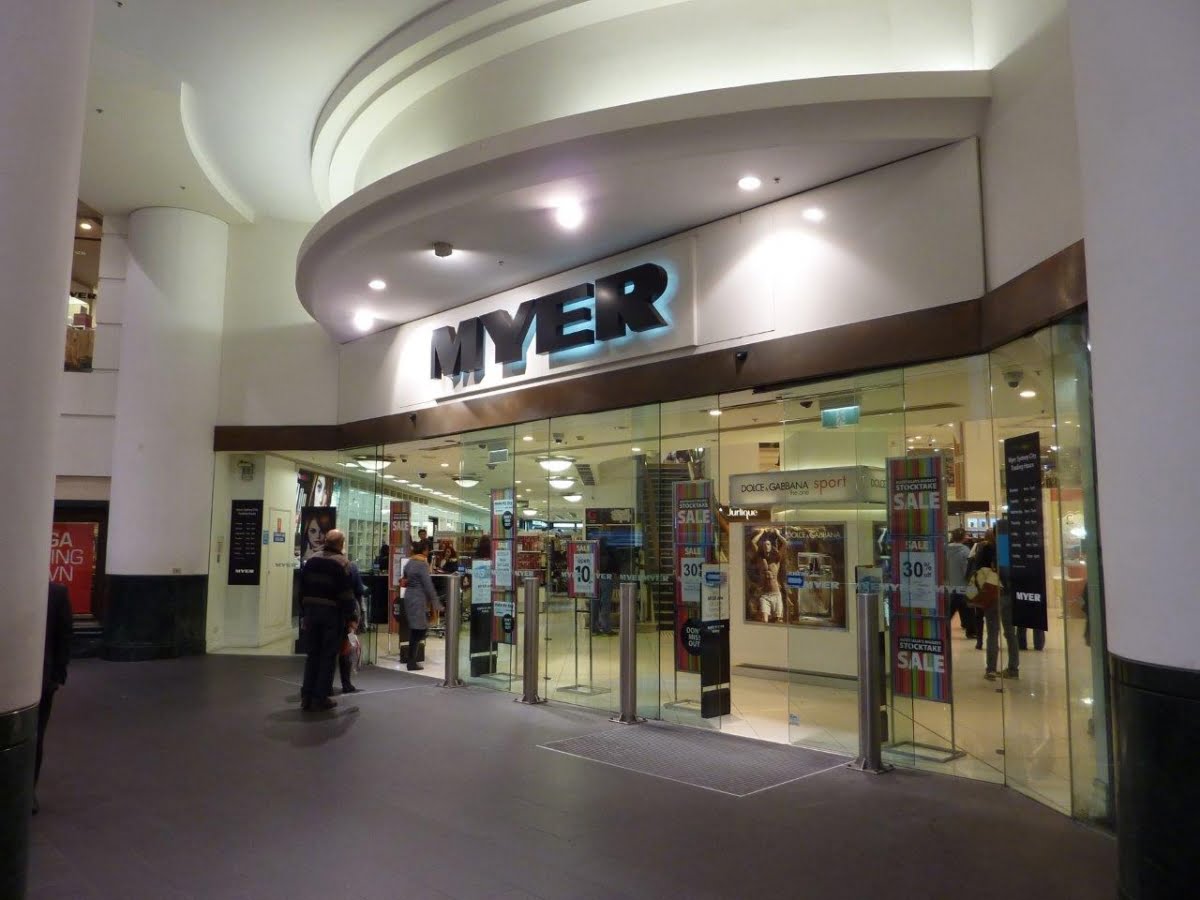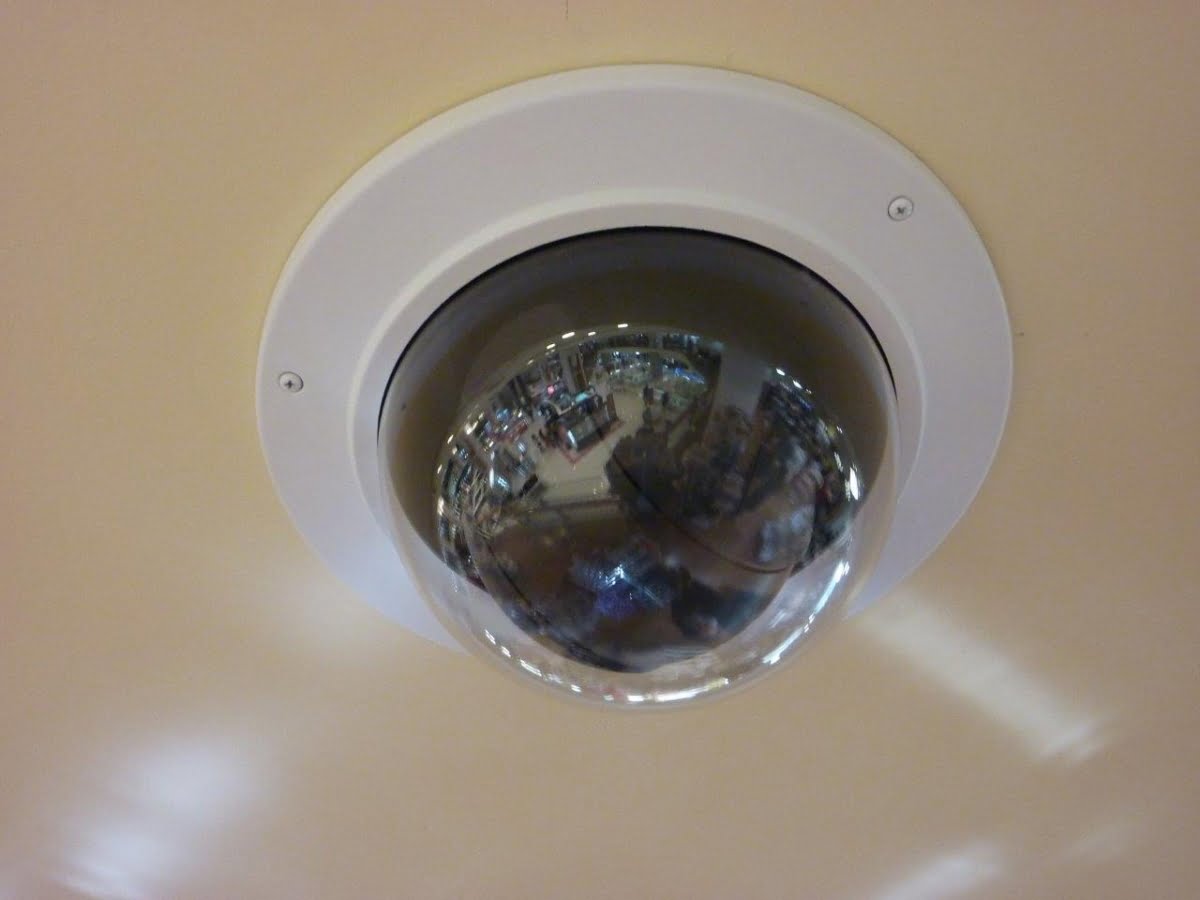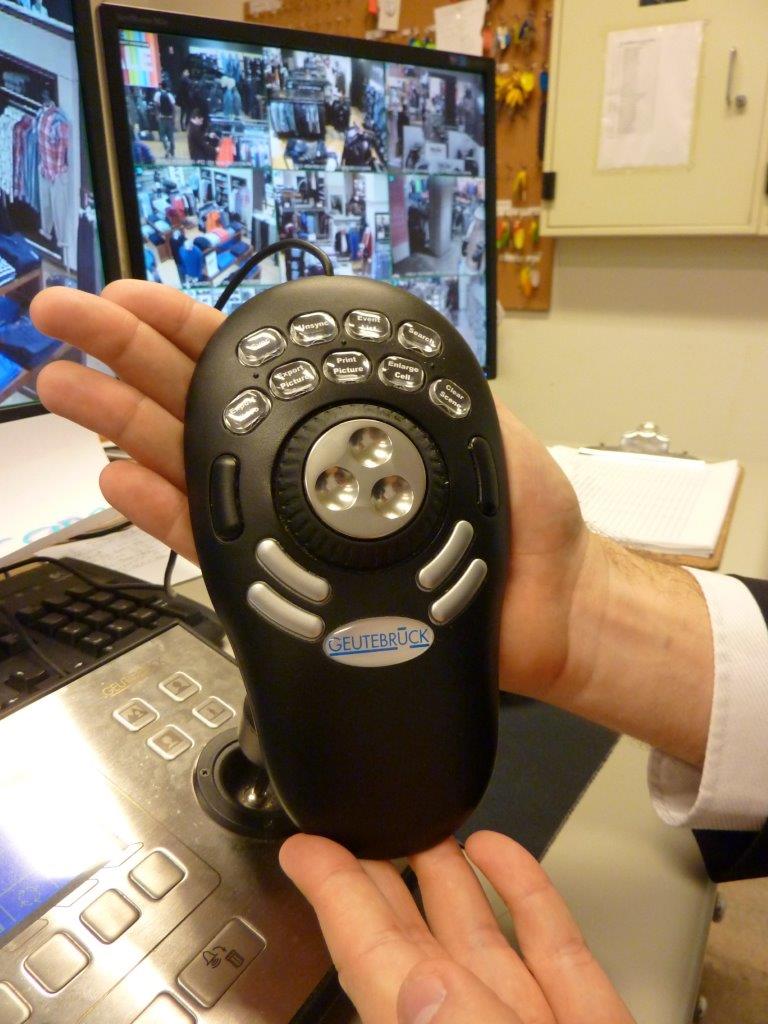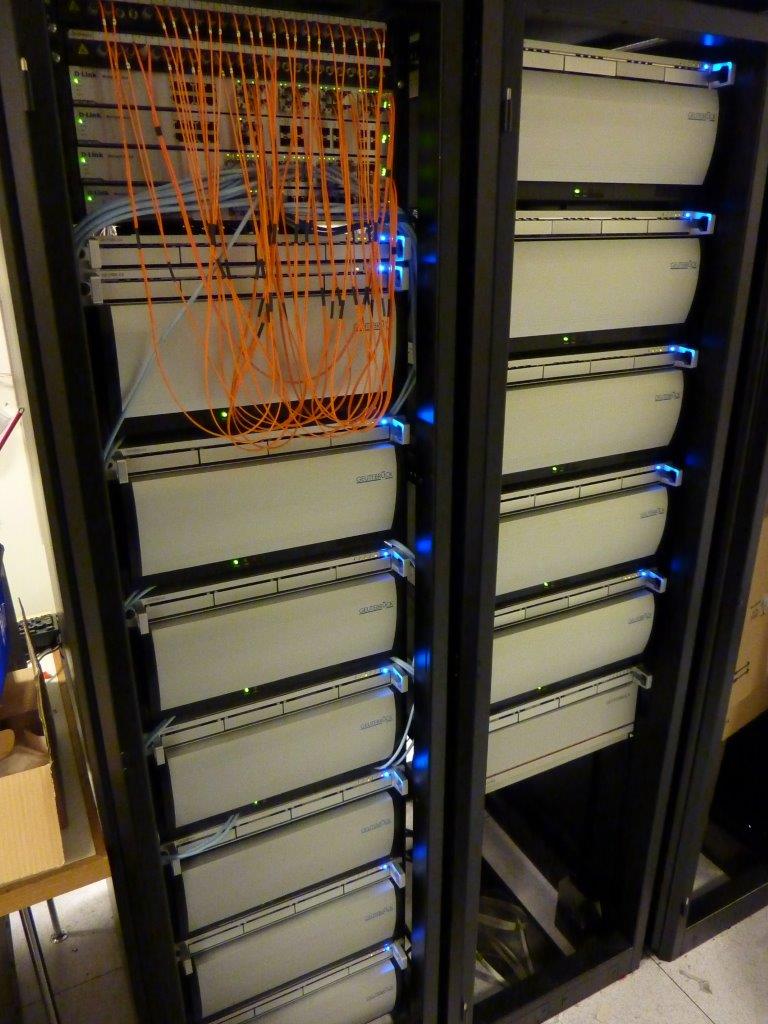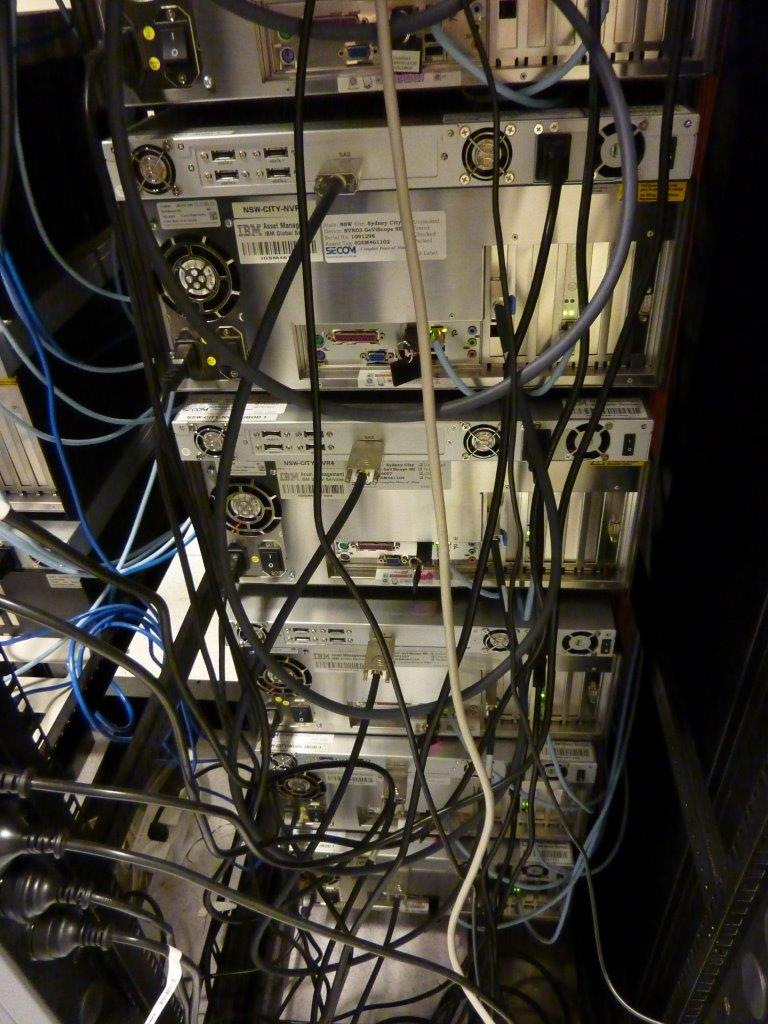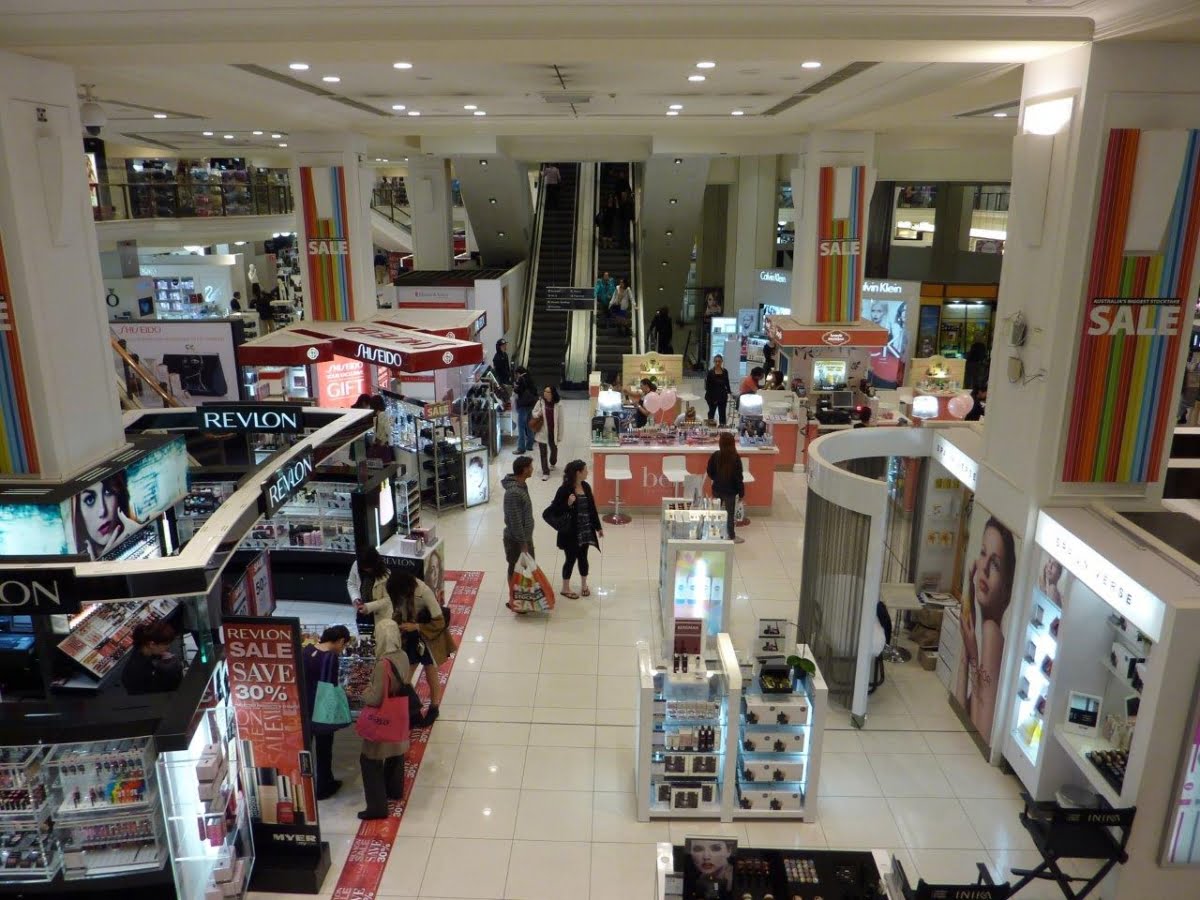MYER is Australia’s oldest, largest and most prestigious chain of department stores. The company was founded in 1899 by Sidney Myer, and the first store opened in Bendigo. By 1935, Myer employed 5500 people and over the years, through organic growth and acquisition, it became one of the most recognisable names in Australian retailing.
It goes without saying that so venerable a business has a long history of success in security and loss prevention. And when powerful new IP CCTV technologies became available, Myer management was eager to use them to enhance safety and security and to protect the business from shrinkage and fraud. The result was one of the first and largest IP CCTV projects ever seen in this country. It was also the first serious application of megapixel IP surveillance technology.
Neil Redfern, regional security and loss prevention manager, has been with Myer 17 years and seen a number of surveillance technologies come and go. This experience gives him an excellent perspective on the value of the sorts of 720p HD solutions that are rapidly becoming our industry’s best practise.
According to Redfern, one of the issues in the past was that Myer had not invested significantly in an end-to-end solution and as a result there was limited consistency of technology across the business.
“Prior to the installation of this new system the stores, depending on where they were, had various aged solutions,” he explains. “Some stores had old black and white systems, some stores had DVR-based solutions. It was not consistent.”
According to Redfern, Myer’s CCTV Project was lengthy.
“When you look at the end-to-end process of scoping and selecting products, having visits from different vendors and looking at every different product, it was an intensive process,” he explains.
“At the time it was probably the largest CCTV system in local retail – it was quite an interesting challenge going out into the market with this project. Sony’s 1.3 megapixel camera technology was very new back when the system was originally specified.
“The one thing you soon learn when you go through this process of scoping is that it’s a battle of what do we like, what do we need, what can we afford and essentially trying to find the balance between data storage, picture quality, it’s a real trade-off process.”
According to Redfern, at the start of project the scale of what was being undertaken was somewhat underestimated.
“When you look at the scale of works including sorting out camera placement, doing the cabling, installing the NVRs and workstations – it was a big job,” he explains.
“Naturally, the process of how the surveillance system would integrate into the business and the infrastructure that it would use meant that it needed to be part of the Myer IT network. When the IT department became involved, the synergy of the entire business working towards the right outcome with engagement of the key stakeholders started to fall into place.”
Redfern says that the primary purpose of the system is the security of Myer stores but he says that because the camera system has such flexibility it also supports areas like customer and team member safety.
“The camera system has the ability to view incidents and identify risks as they occur. There’s also the physical security of our stores overnight, as well as during trading hours,” he explains. “It’s a broad tool that allows us to manage risks that exist within the business.
“We’re also susceptible as a business to the impact of theft and fraud so this is another area the cameras help us. The system allows us to manage shrinkage results more effectively across the business. A key goal of the system was to help get our shrinkage under industry best practice.
“We do what we call retrospective briefs of evidence so if we have an incident we’ll use the CCTV footage to pull that incident together and report it to the police and that offender becomes wanted for that offence – because of the intelligence generation in our business with this new system we get to know the types of offender targeting us.
“One of the biggest benefits of the system is our ability to prosecute offenders even after the crimes have occurred –it’s a great strength of the new system.”
In terms of return on investment, will the system much pay for itself over a period of time, given such savings? I wonder aloud.
“Absolutely,” says Redfern. “CCTV is very necessary in relation to addressing a number of issues, not only shrinkage management but liability issues.
The Myer CCTV system
The first thing to bear in mind with this system is that it represents an early expression of IP technology. Myer was an early adopter and for a number of reasons there was a long project pipeline. This means the cameras are 720p HD resolution but record in MJPEG, not H.264. There is a benefit to this – image quality is quite outstanding.
The heart of the system is installed in the network rooms of each store, a mix of Geutebruck GeViScopeSE and GeViScopeIP/SE servers with dual power supplies and bullet-proof solid state drives handling the operating system. According to Geutebruck Australia’s managing director Anthony Brooks, each server has an average of just 20 camera streams.
“By today’s standards this is relatively small and it reflects the constraints of recording an MJPEG camera onto what were at the time the largest single disk 1TB HDDs available,” he explains.
“The system sits on an embedded Windows environment – making it easy for the Myer IT department to manage. Typically the average store has between 5 and 7 servers and an average of 90 and sometimes more than 200 cameras.”
All the fixed cameras, a mix of Sony DM110s and DM160s, are PoE, while the RX530P PTZs are separately powered but are also connected to the dedicated CCTV network. Secom STS created the CCTV network with a series of VLANs which serve to separate the record, database and viewing streams.
This is a complex solution in large part because the demands are so high. It’s no set-and-forget retrospective application trickling along in VGA and recording on motion. This is a living system used in real time to enhance the capability of teams on the ground while demanding the best possible court admissible recorded images when these are required. Even now such applications are very tough to get right.
According to Brooks, the project kicked off in 2009 after an extensive shootout and evaluation of many systems that itself lasted nearly 2 years.
“This evaluation highlighted many of Geutebruck’s advanced video management features and flexible software. Once started, the majority of the project was complete within 18 months with continued deployment thereafter to meet Myer’s ongoing refurbishment and fit-out needs.
“Geutebruck has been actively involved from the start – from the POC stage through to commissioning and training support,” he explains. “And the system is an absolute credit to the engineering team at Secom STS which meticulously designed, tested and implemented the network to support the single largest deployment of megapixel cameras in Australia.”
The George St, Sydney store, where I see the Myer system in the flesh is one of the larger Myer systems with more than 250 cameras, 40 being PTZ, spread across 7 floors (the biggest system is Bourke St, Melbourne, with over 360 cameras). George St is a big system in its own right and when you consider there are 66 stores with similar solutions across the country, the challenges of this national application become clearer.
“We are now in a position as a total business, where every store we have has the Geutebruck solution – it’s given us an excellent platform from a security and safety perspective, as well as allowing us to manage the risks we face in the business,” Redfern explains.
Part of the process of managing these risks is ensuring cameras are positioned where they offer the best possible coverage. As a result, lots of thought went into camera placement.
“We have covered all our perimeters extremely well so we get very good ID shots,” says Redfern. “Fitting rooms are always a problem area so we have cameras recording entry and egress areas of fitting room lobbies. All our transaction centres, our registers, are covered by the system, all our escalators, lift lobbies, entries to public toilets are covered.
“Next, we have a variety of other cameras in our support areas, like our docks, reserves, staff entries, loss prevention holding cells where we hold offenders for custody management. We’ve really gone out and done the whole business and that’s just the fixed cameras. There are also PTZ cameras in all the stores that allow more flexible coverage of hotspots and events.”
Redfern explains that from an intelligence point of view, a great strength of the system is the volume of images operators are able to save. These are uploaded onto a shared drive and Myer intelligence officers can use those images to let other stores in the network know of risks.
I’m not surprised when Redfern tells me the Myer IT department was heavily involved.
“They understand the infrastructure of Myer from a technical perspective. It’s all very well for us to say we want XYZ but if it’s something that is not possible with the existing infrastructure then we really have to be sensible about what solution we are engaging,” he says.
A key element of the system is that currently operationally standalone in most stores.
“It comes down to the nature of the Myer network,” Redfern tells me. “Drawing that much data at that volume was not possible historically. It’s absolutely the future of where we are now going with the system – we have the ability to remote access the systems. The dream is to have that capability so our investigators and loss prevention officers can be more efficient and draw data from wherever they need it.
“Of course, it is possible to connect to remote systems across the network one at a time but we only allow Secom to dial into the systems for maintenance. They can also log into the system and draw back data of incidents if we need them to.”
Operation and control
We go into the Myer George St store’s control room. As we walk in I can see some older equipment is still in place and operational. The new gear is primarily a single workstation with three monitors clustered around it. As we come into the control room, Myer operators are viewing footage of a shoplifter – it’s a graphic illustration of the power of the new system. The detail is very clear as the person takes a couple of perfume items and walks out of the store, with the operators following every move on camera and tracking security officer response.
The control room itself is a simple space, long and narrow. There’s nothing flash about it. Myer’s investment here has been in the technical surveillance solution.
“That’s the old system,” says Redfern, pointing to a wall of small screens showing the site’s legacy analogue cameras. To my eyes, now used to the glittering edges of 720p and 1080p HD cameras, the analogue scenes look yellow and soft, though perhaps part of this is the aging of the phosphor coating on the monitors. Along one wall are timelapse VCRs and early DVRs. Layered in their racks they look like geological forms from the distant past.
“We have elected not to turn the analogue cameras off,” Refern says. “For its age, that part of the system is still working well And while the analogue cameras continue to work, we will still use them. One thing is that as an operator you need to be in a different headspace when you move between the systems. A lot of our loss prevention officers were a bit shocked at the difference between analogue and megapixel – the quality, the way that the images appear, the depth of field.”
Now we’re sitting down in front of the Geutebruck workstation and Redfern explains the nature of the system.
“We’ve gone for a format with the GscViewer where we’ve got 3 very defined monitors, and this configuration is consistent across all our businesses, regardless of the scale of the store,” he says. “On the left hand side we’ve got what I call our workstation where we can select all the cameras and handle the administration.
“The middle screen is what we call the ‘Follow Me’ monitor, which is the monitor we use predominantly for watching people live – because the way the system has been set up, as long as you are watching live on the ‘Follow Me’ monitor, regardless of which camera you call up as you move around the store, it’s all recorded on ‘Follow Me’ in one clean, continual recording.
“From a user’s point of view it’s amazing because we don’t have to go and select the 30 cameras we were watching a person on and record bits here and there, we are recording the entire incident at once. Finally, there’s the third monitor, which is a general observation monitor where we can split the screens and see our high risk departments.”
According to Redfern, the biggest advantage to the new system is that every camera is continually recording – it’s not a matter of only recording what is on the screen as it used to be.
“Also, prior to this installation, systems like FraudWatch were working in isolation but we now have the ability to draw on the point of sale data, as well as being able to view the video footage related to that transaction,” he explains.
“As a result, POS fraud in our business has greatly reduced thanks to a combination of those tools working together.”
Now Redfern starts to drive his system. He’s very comfortable with the controls and finds his way around GscView without effort.
“These PTZs really allow us flexibility when we are hunting for a good shot of an area,” Redfern says. “The reach on these cameras is so amazing we just don’t need more of them. They are a very powerful tool from every point of view.”
The first thing that strikes me as I look at the monitor cluster in the workstation is the high resolution, the level of detail. We are looking at an entry camera, the shots are tight the face recognition is excellent. The ability to zoom in and retain recognition is outstanding. These Sony cameras are doing good work at Myer.
The depth of field is something to behold. We are looking through the entry lane, down a long flight of stairs, across 6-8 metres of lobby, through a set of glass swing doors and across 4 lanes of traffic to the other side of the street. It’s a partly sunny day, mid-afternoon and we’re looking into a bright area. There’s no sign of backlight issues.
Neil focuses on a shopper arriving at the door and entering the store then uses the neat Geutebruck jog shuttle controller, which is separate from the keyboard, to run seamlessly forward and back, showing the event frame by frame. What’s impressive to me is the complete lack of latency in the jog shuttle in reverse which is something many in the industry have complained bitterly about as megapixel cameras have become more widespread. The Geutebruck system handles the stresses of jog shuttle exceedingly well.
“This is the process with the ‘Follow Me’ monitor,” Redfern says, toggling back and forth. “This jog shuttle controller allows us to run the footage back and forth frame by frame – it’s really, really good. And if I want to take a snap shot you can see how easy it is. I highlight the area I want in the image and click.
“The export picture function is simple, you just drop it straight into the file as a high quality jpeg and you are done. It’s a one-touch application. Once we have the footage saved it’s an easy process using the Creator Classic program so we are essentially just dropping the video footage from the files that have been saved. We select it, drop an auto-run feature in there as well and burn it to a disk.
“There’s also a higher frame rate delivered to the ‘Follow Me’ monitor,” Redfern says. “This is because we know this is the footage most likely to be used as evidence. The ‘Follow Me’ monitor is being recorded at 15ips, which is virtually live to the human eye.”
Is it easy to extract footage for police? I ask.
“Absolutely,” says Redfern. “This was another thing that was really important from a Myer perspective. We not only have loss prevention officers that are dedicated, trained and understand how to use this system, we have smaller stores where the management teams need a system that they can use easily as well. That means system operation needed to be intuitive. It also means we have very strong relationships with each state’s police.
“We made key functionality extremely simple – export video, export image, some of the basic synching processes and the jog shuttle which you can see is very, very good. When you look at the old system, just to record a piece of footage you needed to be an astronaut. This is so much easier, more efficient, faster and just more usable.
“The best part about this system is that when you go into the operator function, whether it’s the home position of the PTZs, whether it’s the scenes, it just allows us the ability to view key areas quickly. Our PTZs have dual home positions, high risk areas during trading hours and for perimeter protection at night.”
Redfern says the cameras also offer great ability to help the team manage large crowds.
“On boxing day we’ll have 100,000 people through the door, we’ll have supervisors on every floor, over 100 security officers and police officers,” he says.
“The control room becomes the command centre for the day for safety and security and the entire store is controlled through the CCTV system in relation to operations. It’s a huge undertaking. In the control room there will be 10 of us using the CCTV system to manage all facets of the operation.”
The installation
This system was installed and integrated by a team that included cabler DESA Australia, Secom STS and Myer’s own IT department. The complexity of the national installation is apparent the moment I arrive at the George St store. It’s a retail store, so huge signs hang down from ceilings blocking camera views and bright lights highlight transient promotions. Some ceilings are black, others white – a challenge for installers.
“When you walk into this store and look up at all the high ceilings you can see how hard it was,” Redfern explains to me. “Given 80 per cent of the work was retrospectively fitting out the stores, it was an amazing task. The guys at DESA did a really good job with the cabling and camera fit-off, while Secom STS did the workstations and the installation of the system’s head end.
“One of things we really had a lot of fun with as part of the installation process was camera placement. If you look at the lighting in these images on the screens you needed a very stable camera that was capable of handling a range of environments with spot lighting, fluoro lighting, reflection off floor tiles, dark areas, light areas, often in the same scene.
“It was really interesting trying to select what was the right product for our varied environment – there are so many different stores and all are different. It’s a challenging application.”
According to Ken Seiler, national manager, service maintenance & engineering at Secom Technical Services, Myer requested Secom’s assistance with design and management of the system over a 4-month period with 3 pilot stores to test designs and functionality before the roll-out commenced. This initial roll-out was 65 stores and about 5500 cameras and the numbers have increased since.
“Secom’s role in the installation was overall management, design, documentation and commissioning of the systems,” Seiler explains. “Now Secom’s role is maintaining the system 24/7 with our national network of service technicians, as well as providing design advice and new store roll-outs as Myer’s footprint in Australia grows.”
Seiler says there was a detailed roll-out schedule for the installation that had to be strictly adhered to, given the number of contractors and technicians involved. Weekly meetings with Secom as the main point of control ensured things ran smoothly.
“For us the key to the project was design and planning,” he explains. “Once this was set, the roll-out management and control flowed. New staff were brought onboard to assist with the roll-out process, so most of the challenges where mitigated and controlled affectively by the Secom/Myer team. The Secom team consisted of 5 key staff members throughout the roll-out with a staging and commissioning team comprising another 5 staff.”
Seiler says that completing the initial roll-out took 6 months. He says the challenges of working in a live security environment were handled by keeping the old solution operating until the new system was commissioned.
As part of the process, the UAT (user acceptance test) was carried out with each local Myer loss prevention office and training was completed at each site after the install. From that point, Seiler says Myer used the new system, so no legacy issues arose.
“As is usual in these sorts of installations, much of the cabling work had to be conducted at odd times,” he explains. “The cabling contractor worked after trading hours to meet the timeframes of the roll-out schedule, as well as working at times within an operating store.”
When it came to establishing camera layouts, Seiler says Myer’s loss prevention teams set the camera locations.
“This data was then entered into a standard Myer design template that was developed for each store,” he explains. “Once set, these designs and installations do not change unless they go through a change process. This enables Myer to keep control of its security environment.
“In my opinion, the Myer/Secom relationship has been a very successful. Secom has definitely assisted in bringing Myer’s shrinkage levels down to 1 per cent of total sales, which is fantastic news for Myer, as it was one of the main goals of the CCTV solution.”
Another part of the installation and commissioning process involved ensuring the Geutebruck management system met the demands of Myer’s security team. According to Geutebruck Australia’s Anthony Brooks, there were certain tweaks required to meet client specific needs.
“We did some innovative software development for this project and these included a Spot Monitor Record Plug-in – affectionately known at Myer as the ‘Follow-Me’ monitor,” Brooks explains.
“The simple act of dragging any camera onto this spot monitor triggers 3 events – firstly, the camera stream kicks up from 6IPS to 15IPS, secondly, the stream is recorded to an additional separate database (for long-term archiving) and thirdly all camera streams on this spot monitor are effectively stitched together, forming one seamless stream video stream containing persons of interest.
“We also created a FLTM (Fading Long Term Archive) – this is also often referred to as Frame Fading – a feature that allows us to record at a higher rate and then, over time, purge the recorded database and retain a reduced record stream to extend the archive,” Brooks says.
“An important feature is the way this works – only after-hours and only when the viewing client in not in use. This ensures we do not tie up too many resources.
“Operationally, the Myer security team runs a tight ship – it has excellent processes in place for managing and dissemination of video,” explains Brooks.
“Persons of interest are easily tracked from any of the cameras and search queries from the massive database are displayed within milliseconds. This is the greatest strength of the Myer solution and reflects the nature of Geutebruck’s technology which is built on the seamless management of extremely large databases.”
What about that interesting jog/shuttle keypad in the Myer control room? I ask Brooks. And can he explain why the system shows absolutely no latency when using the jog shuttle at 25ips and 720p HD?
“This performance is a credit to the German development team which has developed a fast database,” Brooks enthuses. “The way we write and read data is unique to Geutebruck. Typically you will never be more than a few milliseconds from video anywhere on the database.
“The jog shuttle you are referring to is a simple input device for interfacing with our video. The concept emerged from the broadcast industry allowing very granular control of the video and also the advantage of not having to take your eye off the video cell when controlling it.”
What about the future? I ask. While it’s currently standalone in each store, does this Geutebruck system gives Myer a pathway to a fully networked surveillance system with central control and storage should this ever be required?
“The system is fully networked and can be centrally managed and controlled right now – the main consideration is just around the network traffic generated with such a high-camera count and the older MJPEG compression – it all makes for a large data-packet count on the network,” Brooks tells me.
Meanwhile, Redfern says Myer was delighted with the development Geutebruck put into ensuring the system met the company’s needs.
“Personally, I was exceptionally happy with the level of service on the development side, coming up with a solution that really catered for what we required as a department store,” he says.
“Every industry has things they require that are different and the challenge with the department store environment is that we needed very much a retrospective tool but also a tool that could be used for live surveillance.”
Conclusion
Seeing the new IP system and the legacy analogue system, which remains in place and functional at Myer on George St in Sydney in direct comparison, was really instructive. The old system works and is useful but the new system is simply superior in every way. And, importantly, the system has been a significant benefit to the Myer business.
“When you look at our arrest rates, when you look at how we are operating our business, this CCTV system has been absolutely key in assisting us to get results we would historically have never been able to achieve,” says Redfern.
“You can see it in the numbers. We might have had more loss prevention resources in the past but now we can do more with less resources because we are working a lot smarter,” he says.
“Shrinkage is a case in point. International best practise is 1 per cent of business as shrinkage and we have made incredible inroads into reducing our shrinkage.”
Listening to Redfern it’s clear the new CCTV system has become ingrained in the loss prevention function and perhaps that’s the strongest indictment of any retail security system’s worth.
“When you listen to our covert operators on the selling floor, their proficiency is so high that when they are watching offenders move from area to area they are saying to operators, ‘the person has just moved into frame of camera number X, now camera Y, now camera Z. They are that good with the system.
“NSW Police have also been extremely complimentary about the evidence we are able to provide and certainly the system has assisted with police enquiries many a time and often in matters that are not necessarily related to Myer.
“From my perspective as regional security and loss prevention manager, the CCTV system has had a far reaching effect on the entire security function,” Redfern says.
“It’s allowed us to check the integrity of more transactions, make better observations of individuals in our stores in real time and retrospectively. Now we have this technology, a good proportion of our work when we have major incidents is quality retrospective investigations and we can do this with more crimes than we ever could in the past.
“The Myer security and loss prevention team was lucky to have a senior executive team that strongly believed in the value of CCTV technology in creating a safer business, a business that’s serious about controlling its risk and losses,” says Redfern.
“In 2012 there is a lot of technology out there that can help loss prevention and security professionals. We are very fortunate we’ve been given such capable technology to support our operations.”
By John Adams
